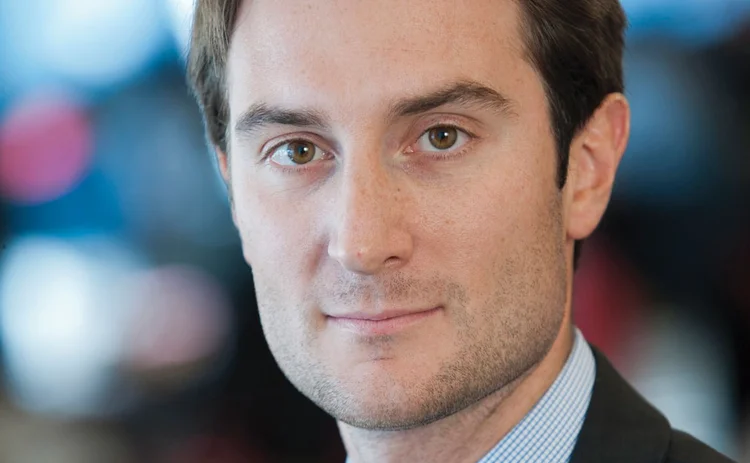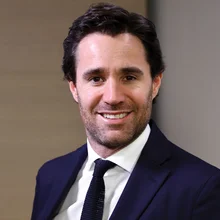
Structured products house of the year: Societe Generale
Risk Awards 2020: Volumes slumped across the Street; SG used Japanification theme to unlock demand

‘Japanification’ has been one of the words of the investing year – shorthand for the fear that low growth and low inflation will persist and spread across developed economies, in an echo of Japan’s own three-decade-long battle against deflation.
At first glance, the thesis looks toxic for the structured products business, choking off the strong convictions that drive investors to the market – and issuance volumes across the Street for the first half of the year fell 20%, according to industry estimates.
But there’s another side to the story, too. When yields are low, and convictions weak, then a structured trade may be the best way to express a more nuanced view – if you can find one that works.
Societe Generale did, offering multiple ways to combine defensive premia with positive carry, for retail and institutional investors. The integration of Commerzbank’s equities business – including a €20 billion notional one-shot transfer of structured products – also helped it grow in markets where the French bank had been smaller, generating a 30% increase in German distribution activities, for example.
Overall, the bank’s equity trading revenue for the first three quarters was 9% down year-on-year, but SG says sales of new products remained heathy and market share was up.
“In a very challenging year of negative yields we’ve further extended the platform, and our commercial activity in exotics for the first nine months was good versus last year. We managed to keep our business in a year where flows are down,” says Frédéric Despagne, head of European distribution sales in SG’s global markets division.
Clients singled out the French bank for innovation and service. “They have such a large scope of products and give us great access to traders, structures and economists. Where they really stand out is their ability to price, and to help solve and innovate,” says a wealth management client.
Seeking redemption
In retail markets, buyers, sellers and distributors went into 2019 in a state of near-panic. A savage final quarter of 2018 left dealers buckling under the strain of rising exotic exposures in their autocall books. South Korean products took the full force of tumbling stock markets in December, forcing Natixis to slash exposure following a €260 million hit.
SG weathered the storm, but went on to add some key safeguards in the next generation of products. Issuers of Korea’s popular ‘worst-of’ autocalls must guarantee the performance of underlying indexes such as Euro Stoxx 50, HSCEI and S&P 500 in the local currency, leaving them exposed to foreign exchange risk. In December 2018, SG launched a forex-hedged index that mimics the performance of the traditional benchmarks denominated in Korean won. This trimmed quanto risk for clients and dealers, in some cases doubling the coupon. Around $1 billion equivalent has been invested in the product since launch.
In Europe’s growing autocall market, a first-quarter surge in the Euro Stoxx was bad news for issuance – if the underlying stocks or indexes don’t climb, then the product is not redeemed and investors don’t get their coupon. In total, industry estimates suggest an extended period with few redemptions has meant issuers are sitting on more than $120 billion equivalent in notes.
To entice wary investors back into the market – and avoid piling on identical exposures to their existing stock – dealers had to find new ways to improve the chances of redemption.
“Banks have constraints and they need to diversify. They cannot manage only a stock of vanilla autocalls on Euro Stoxx 50 as it concentrates risk. If we create autocalls that recall in different scenarios or more scenarios, it’s good for us in terms of risk management and you can make a better price to the client,” says Jean-Francois Mastrangelo, SG’s head of pricing and development, EMEA.
In a very challenging year of negative yields we’ve further extended the platform, and our commercial activity in exotics for the first nine months was good versus last year
Frédéric Despagne, SG
One way SG increased redemption prospects was to increase observation frequency. These are typically set quarterly or semi-annually, but new autocalls observe underlying levels every day in the event the product is not knocked out after the first year.
A standout product according to clients was the Darwin autocall – a novel twist on the worst-of structures, which are frequently distributed by Asian and European private banks. Europe’s worst-of market is dominated by single-stock baskets and the products only knock out when the laggard of the group hits the upper barrier. The products use correlation between underlyings to cheapen the embedded put option and boost the coupon.
Knock-outs on these products have been low, leaving investors without their coupons. In some countries where long-dated versions are common, for example France and Italy, trades can stick around for up to 12 years, also leaving dealers exposed to hard-to-hedge correlation risk.
Darwin takes the form of a traditional worst-of product for an initial phase – typically a year. If not redeemed in the first phase, the product evolves to reference the average performance of the entire basket of stocks. If the note still doesn’t knock out after a second phase – typically another year – it further morphs into a best-of structure and is recalled as soon as the strongest performer hits its upper bound.
The shape-shifting mechanism addresses another problem with worst-of structures – the product can collapse in the event of a snag with any single name in the basket. “Darwin gives you a great way to escape, even if you have a profit warning on a name inside the basket,” says a private banking client who traded multiple iterations of the product.
While redemption chances can be easily increased by lowering the upper barrier in the product, this also cuts the coupon – a no-no for clients. SG’s latest crop of innovations aim to avoid that trade-off.

“All these innovations have one thing in common – it costs much less than lowering the barrier. Clients can improve their early redemption probabilities at a much lower cost,” says Despagne. “Working intensively with traders, we developed innovations to reduce their main costs of hedging. And we reinvested the gains in more protection or more coupon for our clients.”
Some clients preferred to steer clear of equities altogether, triggering a search for compelling stories elsewhere. SG found one in US rates, pairing autocall structures with US dollar Libor exposure, and ultimately trading more than €500 million of what it called autocall reverse convertible notes.
The product took off in May, when the Libor curve fell rapidly in response to the Federal Reserve’s U-turn on rate hikes. The one-year notes are a bet on limited cuts and deliver a high coupon – up to 6% – if three-month dollar Libor remains above a predefined level. A quarterly autocall feature sees the notes redeem if US rates trade above spot at the observation dates.
“There’s some interesting value in rates underlyings thanks to the volatility. Autocalls compress volatility on the downside so non-traditional underlyings aren’t as squeezed as equity. It’s a very different risk from an autocall on Euro Stoxx,” says Mastrangelo.
QIS quest
In the institutional arena, SG defied wider malaise, growing assets under management in its quantitative index strategies by 7% to $21 billion, while many competitors suffered outflows. Again, the Japanification theme helped explain the bank’s success.
Take commodity carry. It’s not a new source of risk premium, but SG gave the strategy a defensive makeover, using an adaptive signal to guard against the natural gas shocks that wreaked havoc in some portfolios during 2018. SGI Coda is a systematic strategy that couples a synthetic long position on the dealer’s proprietary commodity curve carry index with a short position on the Bloomberg commodity index, Bcom.
The strategy aims to monetise the roll up or roll down of different commodity curves depending on whether they are upward- or downward-sloping. It’s a new rival to Goldman Sachs’ popular GSQuartix, but SG’s version incorporates a mechanism to dampen the impact of sudden price lurches, which can leave investors exposed to intra-month flips.
With a new player on the block, one hedge fund replicator client saw an opportunity to diversify its existing exposure and was impressed enough to jump in early. “We knew the product had been live for less than a year when we invested and we prefer a longer live track record than that, but we did a quant analysis and were very happy.”
In rates, record low headline levels didn’t have to equate to low returns. SG traded a large duration-neutral rates carry strategy for a European pension fund. The relative value strategy takes long/short positions across 10-year government bonds. On the back of this success the bank followed up with a swap-based version of the strategy.

“Slopes in euro rates are still very interesting and you can extract a lot of value from the curve. This strategy takes long positions in high-carry countries and short positions in low-carry countries. It’s a relative value bet on rates, so if all rates move together it remains neutral,” says Manvir Nijhar, SG’s head of equity and fixed income institutional sales UK, and co-head of equities and equity derivatives UK.
From the class of 2018, SG’s long US dollar rates forward volatility strategy, VRR, continued to impress, growing assets under management towards $1 billion. The US rates vol curve has been uniquely downward sloping between the 10- and 30-year points for the past 20 years, hence a reliable source of carry. The trade continued to perform, delivering 3.5% in the first eight months of 2019, despite a clampdown on Taiwan Formosa bond issuance – hedging of the embedded call options in those bonds were seen as a primary cause of the downward-sloping US curve.
Imitation is the sincerest form of flattery, and two large competitors are understood to be in the process of replicating the long rates volatility strategy for their own clients.
At the junction of distribution and institutional activity sits alternative risk transfer – the recycling of exotic risks stemming from retail issuance to sophisticated hedge funds and pension funds. Here, SG excelled, unwinding a record 25% of its cross-asset exotics books through risk transfer trades.
Standout transactions included a €20 million vega geometric dispersion trade, packaged into a single total return swap for one institutional client. Hedge funds bought a further €7 million vega of geometric dispersion incorporating a novel autocall feature, which sees the transactions redeem if equities rise by more than 10%.
Only users who have a paid subscription or are part of a corporate subscription are able to print or copy content.
To access these options, along with all other subscription benefits, please contact info@risk.net or view our subscription options here: http://subscriptions.risk.net/subscribe
You are currently unable to print this content. Please contact info@risk.net to find out more.
You are currently unable to copy this content. Please contact info@risk.net to find out more.
Copyright Infopro Digital Limited. All rights reserved.
As outlined in our terms and conditions, https://www.infopro-digital.com/terms-and-conditions/subscriptions/ (point 2.4), printing is limited to a single copy.
If you would like to purchase additional rights please email info@risk.net
Copyright Infopro Digital Limited. All rights reserved.
You may share this content using our article tools. As outlined in our terms and conditions, https://www.infopro-digital.com/terms-and-conditions/subscriptions/ (clause 2.4), an Authorised User may only make one copy of the materials for their own personal use. You must also comply with the restrictions in clause 2.5.
If you would like to purchase additional rights please email info@risk.net
More on Awards
Market liquidity risk product of the year: Bloomberg
Bringing clarity and defensibility to liquidity risk in a fragmented fixed income market
FRTB (SA) product of the year: Bloomberg
A globally consistent and reliable regulatory standardised approach for FRTB
Best use of cloud: ActiveViam
Redefining high-performance risk analytics in the cloud
Best use of machine learning/AI: ActiveViam
Bringing machine intelligence to real-time risk analytics
Collateral management and optimisation product of the year: CloudMargin
Delivering the modern blueprint for enterprise collateral resilience
Flow market-maker of the year: Citadel Securities
Risk Awards 2026: No financing; no long-dated swaps? “No distractions,” says Esposito
Pricing and analytics: fixed income – Quantifi
Quantifi delivers high-performance, transparent and adaptable pricing and risk analytics for fixed income and credit markets
Derivatives house of the year: Citi
Risk Awards 2026: Rev up, RWAs down, as US bank gets back on track (with added XiNG and XiP)







